Asmund, come on, give us the rockets!
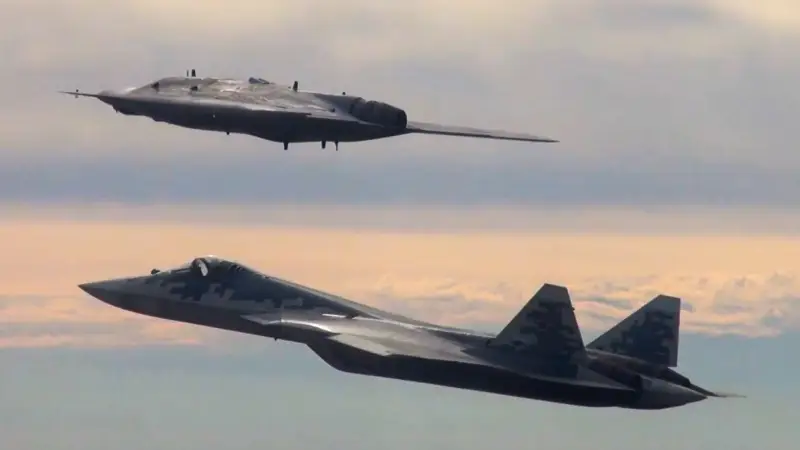
The well-known Swedish concern SAAB is working on the concept of a supersonic, stealth drone codenamed "faithful wingman". The program has been funded by the company from its own funds for some time, but until recently went largely unnoticed. Ultimately, however, the emergence of such a drone concept is entirely consistent with the company's status as one of the active developers of unmanned systems in Europe.
The idea of drones, whether powered by artificial intelligence, controlled from the ground or from the cockpit, is not new as such. The only question is the concept of application and size. In Russia they made the S-70 “Okhotnik”, a huge thing with not entirely clear capabilities.
However, the dimensions of the S-70 indicate that such a device has more than one or two options for use, since a large size means a large engine and a large load capacity.
And why, tell me, are the Swedes worse?
Yes, the country used to have a neutral status, and no one seemed to be planning to attack it, but everything in this world is relative. Enemies appear or are invented, which means we need to modernize the army, Aviation and the fleet! And if we are developing a hefty S-57 in addition to the rather large Su-70, then in Sweden they are coming up with a very compact and lightweight SA.39... However, first things first.
Photos of a concept drone developed as part of Saab's Future Combat Air System (FCAS) program have recently made the rounds on social media. At this point, it is worth noting that the FCAS nomenclature is used by British and pan-European air combat programs, each of which has a basic manned fighter aircraft at its core. Here it must be said that SAAB previously collaborated with the UK under the FCAS program, which we will pay attention to a little later, but in general the idea of the Swedes caused some excitement in the aviation circles of Europe and the UK (which does not really consider itself Europe)
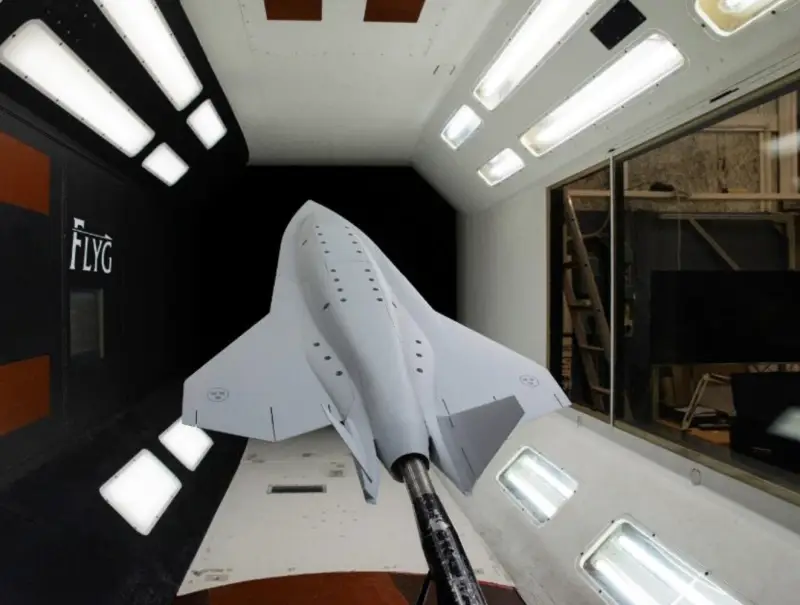
Full view of the SAAB Loyal Wingman concept in the L-2000 wind tunnel at the Royal Technical High School in Stockholm
Unlike many similar designs and concepts, the Swedish drone appears to have been initially designed for high speed, supersonic flight, and low visibility. It has a wing and body configuration with traces of optimization for supersonic flight.
The concept has a single engine with an air intake above the nose of the fuselage, designed for stealth. They also clearly put a lot of effort into the nozzle in terms of camouflage; it is well recessed into the tail part of the device, which will provide additional camouflage when trying to detect the UAV using its heat signature.
Typical of stealth aircraft, the drone has outward-angled vertical stabilizers protruding from either side of the rear fuselage. The usual horizontal tail surfaces are absent here.
The bottom view of the model confirms that the drone is designed to have significant internal space, which clearly implies transportation weapons. On both sides of the fuselage there are long storage compartments hidden by large one-piece hatch doors.
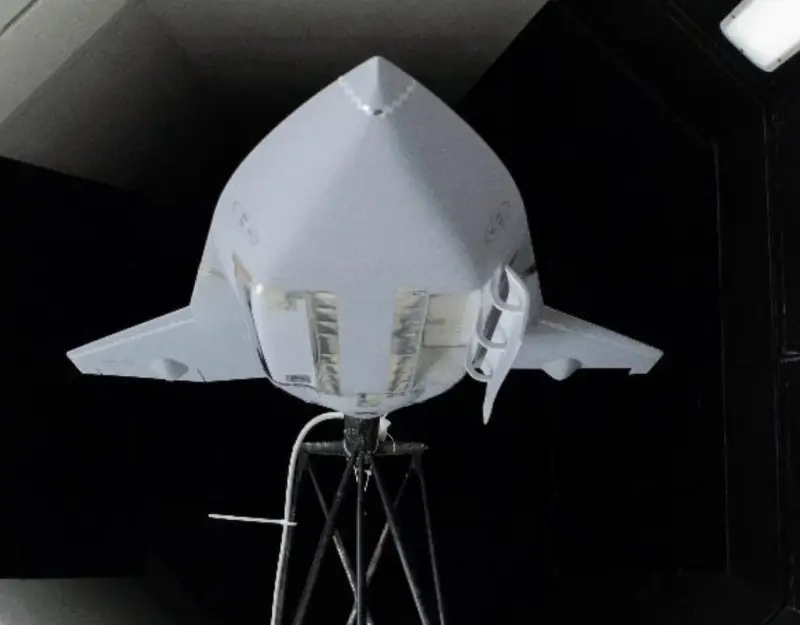
Model of a wind tunnel with one open weapon bay
The landing gear is a conventional wheeled tricycle, retractable into the fuselage. In general, any such supernovations are not noticeable, but this does not mean that they do not exist.
SAAB's "loyal wingman" concept came out of the shadows back in September 2022, when it was presented as part of an academic paper at the 33rd Congress of the International Council of Aeronautical Sciences (ICAS), held in Stockholm, the capital of Sweden.
At that time, the main focus was on the aerodynamic development of a supersonic and stealth “true wingman” concept as part of the early stages of design, with a transition to practice: some had to be brought to perfection after purging in the wind tunnel, some using computer modeling.
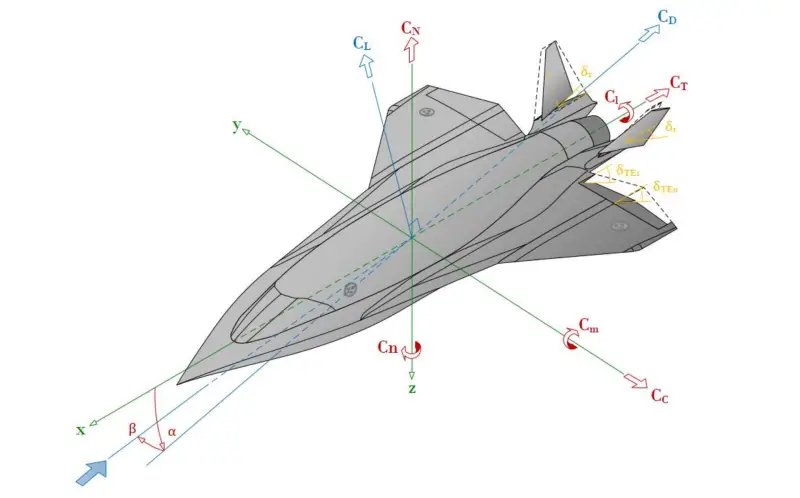
Wind tunnel model and determination of forces and moments measured in the wind tunnel
According to SAAB reports, accelerating the design process was a very important goal using "various levels of computational fluid dynamics tools and wind tunnel testing using extensive additive manufacturing techniques." Additive manufacturing uses computer-aided design (CAD) software or 3D object scanners to create precise geometric shapes, a process commonly known as 3D printing.
SAAB experts, who commented on their work within the limits of what was permitted, said that the company's FCAS efforts included "continuous exploration of new concepts and evaluation of their operational effectiveness in various scenarios," with the supersonic and stealth Loyal Wingman "matured much further than some other".
Here we can conclude that in addition to the Loyal Wingman, SAAB also carried out other developments.
While foreign media coverage has focused mostly on the concepts behind fast, low-cost aerodynamic development, there are a few interesting tidbits that shed light on the Loyal Wingman's actual design.
Ultimately, the report notes that the aerodynamic development study of the SAAB Loyal Wingman drone proved that
That is, in principle, the project was liked and approved. At least at first. But questions remain about the future status of the SAAB Loyal Wingman, SAAB FCAS and the future requirements for combat aircraft in the Swedish Air Force. Including from the perspective in which Sweden is joining NATO.
Back in 2019, it was announced that SAAB had officially joined the UK's Team Tempest future combat aircraft program, along with Italy's Leonardo, in an attempt to share costs and bring a wider knowledge base to the project.
Subsequently, Japan also joined British FCAS research and work, which included the Tempest fighter and which is now known as the Global Combat Air Program (GCAP). The goal is to have a sixth-generation aerial platform in the air by 2035, no more, no less.
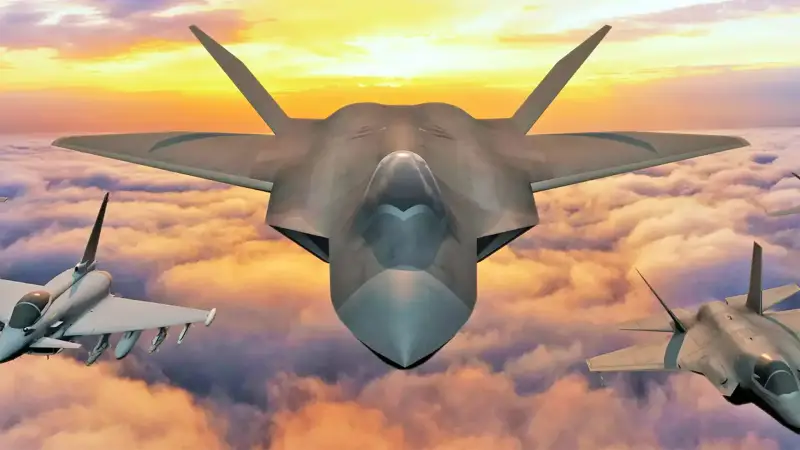
Tempest sixth-generation fighter project under British leadership
Although Sweden was one of the countries that showed significant interest in the UK-led program back when it was still commonly known as FCAS, in November 2023 the country confirmed that it was no longer involved in Tempest, and was no longer mentioned in connection with GCAS.
It is possible that Sweden will rejoin GCAS at some point in the future, or it may merge with the rival pan-European FCAS. At least there is something to do with it.
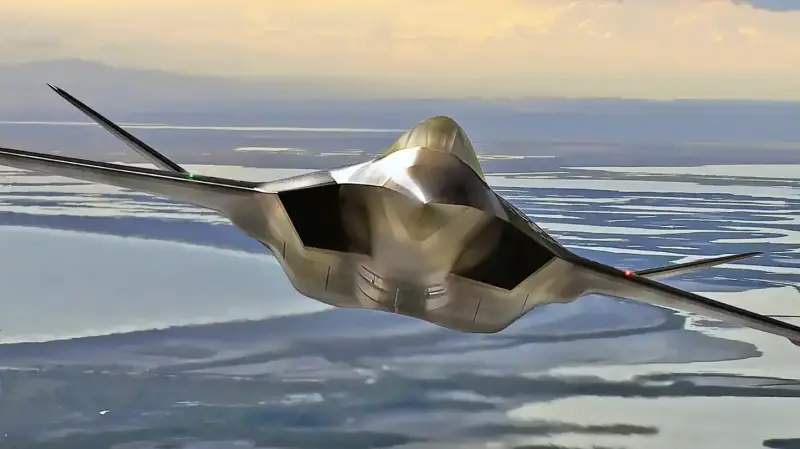
A manned fighter concept that is planned to form the core of a pan-European FCAS program
Both of these future combat aircraft programs aim to introduce a number of complementary technologies, including slave unmanned aerial vehicles (possibly with artificial intelligence) and a new generation of air-launched weapons, not to mention sensors, engines, and data-sharing capabilities and communications architecture.
So far, however, details about potential "loyal wingmen" have been limited, and there appears to be no mention of a supersonic drone like the one SAAB has been working on.
The supersonic, stealthy "faithful wingman" would seem to fly in the face of the "affordable hardware mass" ideas that are currently trending in the field. The idea is that wingman drones should be inexpensive enough that combatant commanders are willing to lose them on high-risk missions, but at the same time be relevant to effectively carry out those missions. The dream of the golden mean, embodied in metal.
But, by the way, it’s not only us and the Swedes who are working in the direction of “faithful followers.” Even in the United States, in light of the rebalancing of its Air Force, they are thinking about changes in the program for the development of similar devices, aimed at higher flight characteristics and, accordingly, higher cost of UAVs.
But the development of the SAAB Loyal Wingman in its current form appears to be an even more expensive and complex solution than those types drones, which were usually proposed for close cooperation with manned platforms in air combat or striking ground targets.
But it is in this role that the SAAB Loyal Wingman can be a very powerful addition to fifth or sixth generation fighters, although with fourth generation fighters, as Sweden does, the theme will not look stupid.
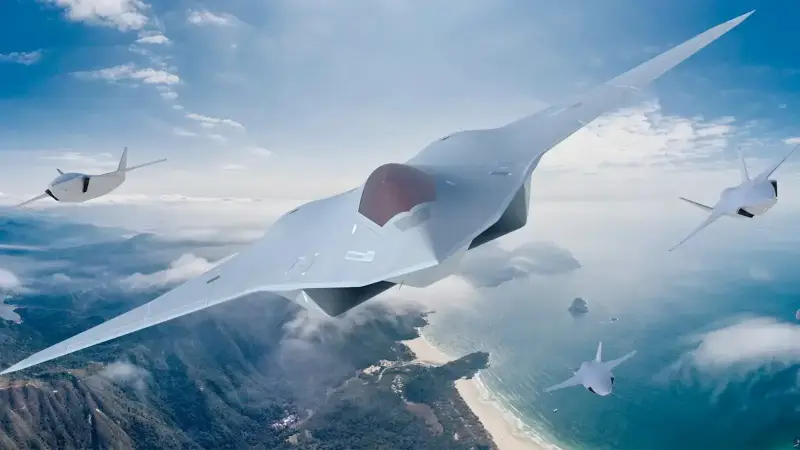
In general, if you think about it, an Air Force with 4th generation fighters like the Gripen can benefit from advanced "loyal wingmen" even more than from 5th or 6th generation fighters.
This would breathe a whole new life into the 4th generation fighter and give it stealth, penetrating capability with the help of wingman drones that would go ahead of the aircraft, as well as greatly expand tactical flexibility, increase tactical situational awareness and dramatically increase survivability. And all this thanks to drones.
One could, of course, argue that with high-end, largely autonomous unmanned wingmen, more advanced and expensive manned fighters may not be needed for the vast majority of missions. Perhaps, but there are some nuances here. The plane that will control the UAV must still be in the air. The operator on the ground will not be able to properly control the situation, this has already been proven.
But the fact that SAAB can pair its Gripen with a drone to give the aircraft advanced capabilities at a lower cost than buying high-tech, stealth, manned fighters and constantly training pilots to fly them is a fact that I don't want to argue with at all.
At the same time, SAAB says it is at the forefront of digital design, flexible software and digital engineering technologies that promise not only to shorten the time between an aircraft's design and when it gets into the air for testing, but also to reduce costs. This was the basic principle of the Boeing/SAAB T-7A Red Hawk advanced jet trainer, although work on this aircraft was, let's say, controversial among many.
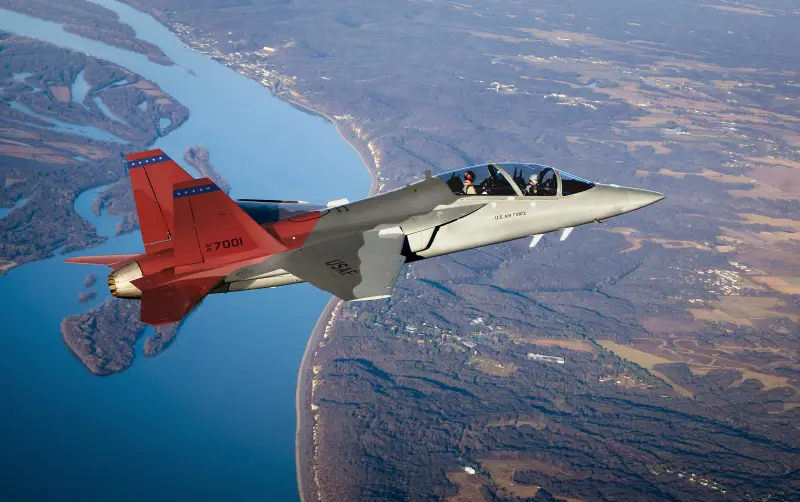
Unlike many other Western European air forces, Sweden has yet to begin acquiring/developing a fifth or sixth generation fighter. Instead, the company can rely on its 60 new-generation SAAB Gripen E for the foreseeable future, and has also decided to retain its older fleet of Gripen C/Ds for a longer period. The Gripen E is significantly different from the Gripen C/D, but despite the differences, both are fourth generation fighters.
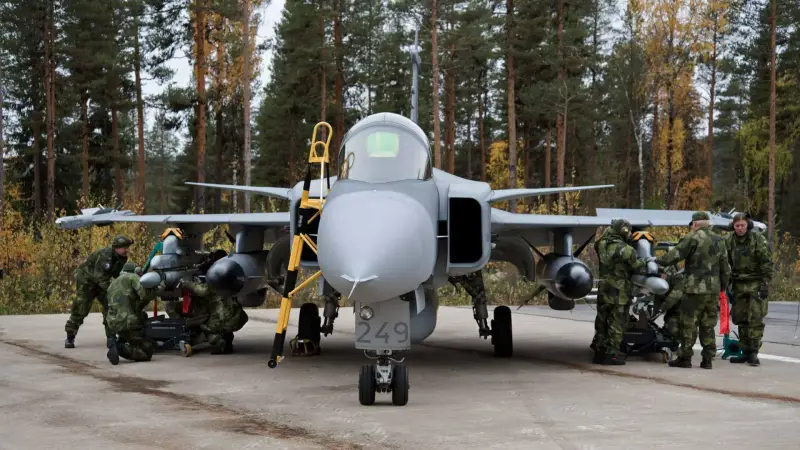
Swedish Air Force Gripen C
This is where having a stealthy supersonic drone that could work in tandem with the Gripen, especially the newest Gripen E with its more powerful sensor suite, could be a huge advantage.
In air-to-air mode, especially when armed with the same Meteor air-to-air missiles as the Gripen, crewed fighters, as well as airborne early warning and control aircraft and others, such as ground control, can guide "trusty wingmen" onto targets, allowing them to carry out combat operations without the need to use any of their own sensors and potentially detect their presence.
In general, the idea of UAVs with missiles going ahead of manned fighters without being detected and forming a sort of first line of defense is a good tactic. AWACS aircraft will carry out target designation for drones, act as “eyes,” and UAVs will be able to attack enemy aircraft without exposing the crews of their aircraft to enemy missiles.
The opposite set of tactics, where drones provide targeting information to manned fighters, could also have great benefits. Having unmanned aerial vehicles of this type that could operate in conjunction with manned aircraft would also simply increase the number of missiles available, which would significantly increase the "magazine capacity" of a squadron in the air.
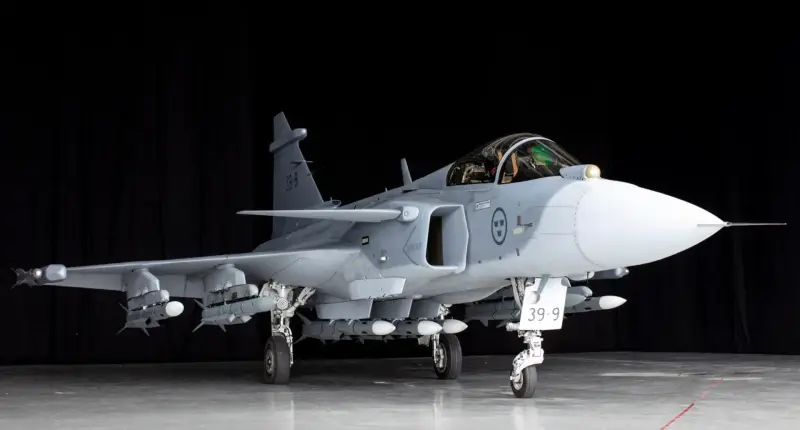
Gripen E with seven MBDA Meteor air-to-air missiles and two IRIS-T air-to-air missiles
In an air-to-surface role, the SAAB Loyal Wingman will be able to penetrate deeper into enemy airspace, possibly flying autonomously, semi-autonomously, or otherwise working closely with the Gripen and other aircraft. And here the usefulness of the UAV is also obvious, since, having a smaller size, it will be more likely to get close to enemy radars, air defense systems, airfields and carry out the first attack using its ammunition.
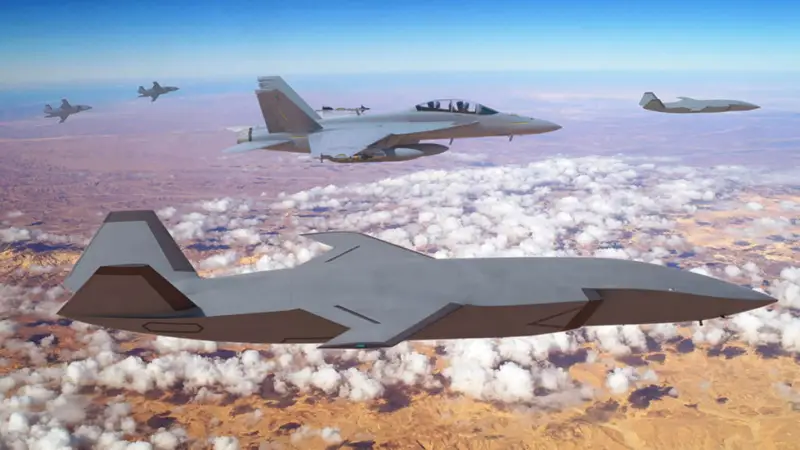
From the point of view of suppressing enemy air defenses, such a drone will be especially highly valued, since it is capable of approaching enemy air defense systems before being detected, and possibly also attacking them kinetically (supersonic kamikaze drone - what do you think?) or with using electronic warfare equipment. The main thing is to quickly and quietly deliver everything closer to air defense systems.
Sweden has a well-established (possibly one of the best in the world) data link system connecting manned fighter aircraft as well as other platforms, ground and airborne. The Swedish fighter-to-fighter data link had already been deployed back in the early 1980s on SAAB Viggen.
To date, the data exchange system has only become better, but its essence is the same: to give the pilot the maximum possible amount of tactical information. This gives the pilot a real opportunity to deal with a much more complex tactical situation.
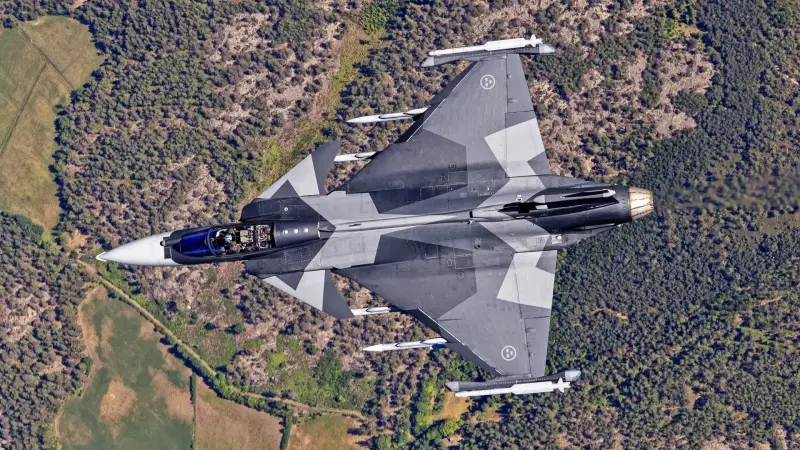
Gripen E
Radars, infrared search and tracking systems, optical location stations, electronic warfare systems, and the exchange of received data are fundamental to the operations of not only the Swedish Air Force, but any air force on the planet. In an environment where keeping electronics quiet is highly valued, a stealth drone could be a natural and effective complement to an aircraft. Supersonic speeds also do not exactly guarantee survival and hitting targets, but, let’s say, they increase the chance of both the first and the second.
It's worth noting that at least one other European combat drone claims supersonic performance (or at least will approach it in later versions) and has already taken to the air. This is the Turkish Baykar Kizilelma, which has a certain degree of stealth, and also seems to be adapted for the types of air combat that are usually carried out by manned fighters.
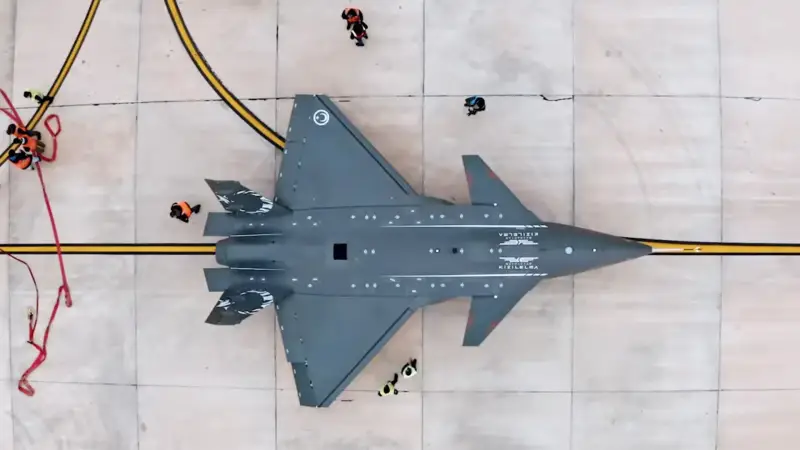
Baykar Kizilelma
Bottom line. Thanks to the Swedish experimental drone Highly Advanced Research Configuration (SHARC), as well as participation in the French Dassault nEUROn, SAAB has already accumulated significant experience in the development of stealth unmanned aerial vehicles.
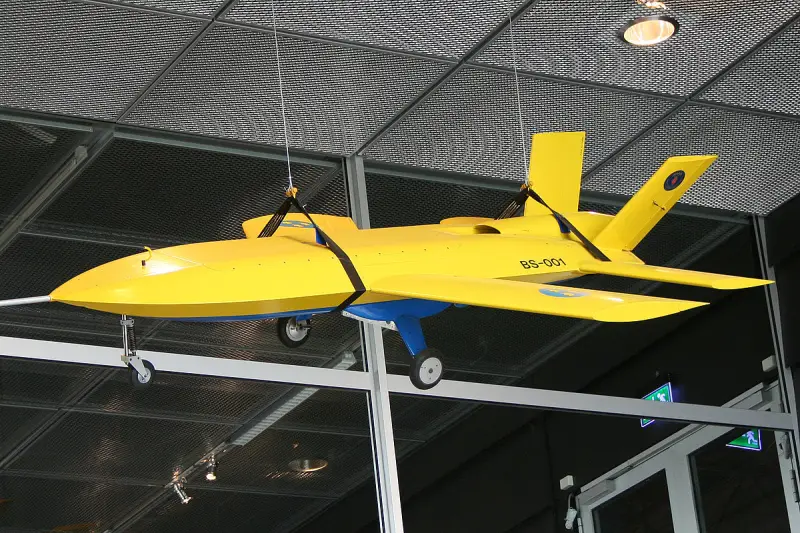
Highly Advanced Research Configuration
The fact that the company has been considering for several years the possibility of combining real high-end performance with speed and stealth, potentially opening the way to a new type of wingman UAVs, will sooner or later bear fruit in the form of a new class of combat aircraft - "loyal wingmen", UAVs with large possibilities.
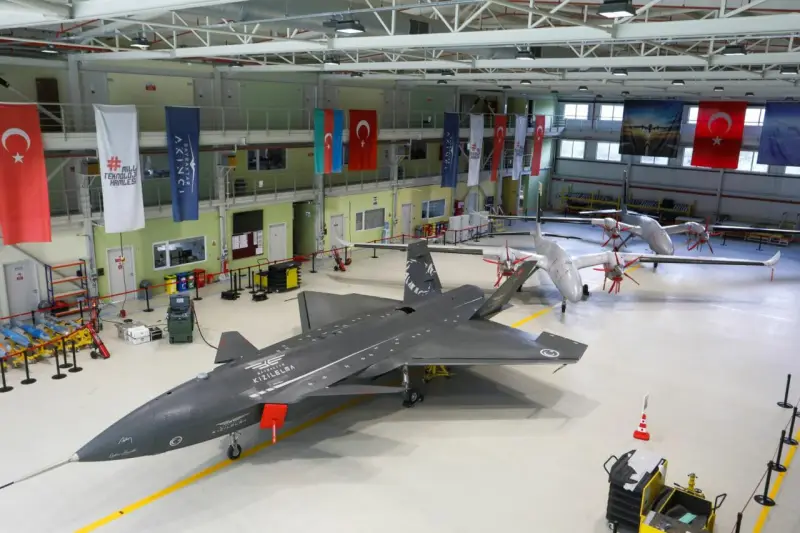
And such a dialogue in the Swedish combat information network between a pilot and a UAV with the call sign “Asmund” is quite possible in the near future.
Information